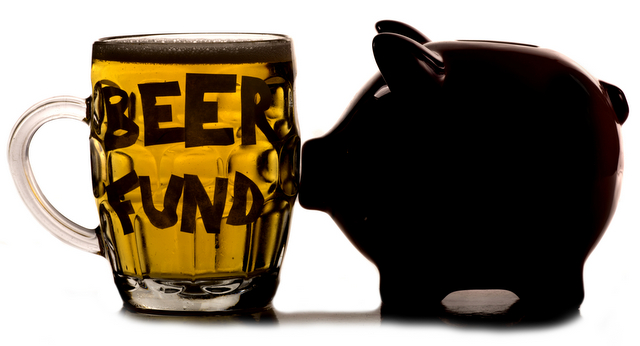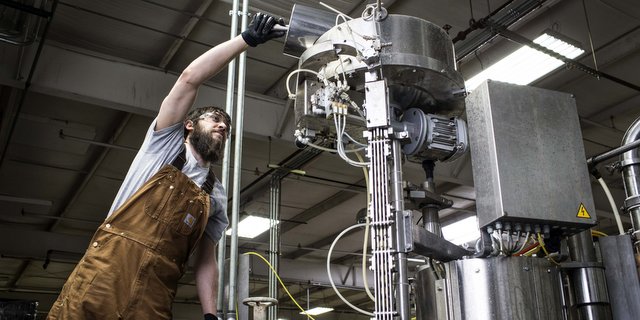Bond Street just published a great step-by-step guide on how to go about opening your very own bar, and we thought it was worth sharing with you CBBers that still have that dream of moving your craft beer love from your garage to, oh, a slightly larger abandoned garage in a rundown part of town. Just be sure to let us know when you do because we want to hang out there.
Thanks to the Bond Street peeps for letting us republish a piece of their guide — focused on the business plan and financing. If you like what you see, definitely hit their site for the full thing, which includes more on cost expectations, the liquor license process, hiring, equipment, etc.
Creating a business plan
Summarize your concept in a few tight sentences that you can eventually use as the starting point of your pitch to investors.
What are you going to name your bar? This is the beginning of your dream becoming a household name. It’s more important than you may think. Be creative, steering clear of the generic, let it espouse your vibe and make it catchy and memorable.
Determine how much initial capital do you need: However much initial capital you think you will need — you need about 20 to 40 percent more than that … SERIOUSLY, 20 to 40 percent more — when in doubt, round up.
Be sure to include the amount of initial capital that you have in personal funds and how much money you will need to raise from outside sources.
RELATED: Craft a brewing business plan: Tips from a brewery in planning
Solidify your first hires: Everything from whether or not you’ll have a manager or you’ll be managing the bar yourself, to your bouncer and security needs, to how many bartenders you plan to hire should be laid out in your initial business plan so that when you begin your search for your opening staff, you know who you’re looking to hire. Here are a few staff members that current bar owners say are absolutely essentially (and they may surprise you):
- A really good bookkeeper: Your finances are going to overwhelm you. When I asked the owner of Summers, Chris Taha, for something he’d do differently he quickly responded, “Have a good bookkeeper from day one.”
- “An accountant with a backbone who will make you do what you need to do — like pay your taxes.”– Scott Perez, Walkers
- A liquor lawyer to negotiate the liquor license.
- A lawyer who will first help you negotiate the terms of your lease and who will then serve to handle your legal needs (you are opening a bar).
- A plumber you can count on, consistently, all the time (again, you are opening a bar).
- If you’re choosing to hire a manager, they will be your eyes and ears, choose wisely.
Outline where will you look for your opening staff: Other than word of mouth and pulling from the neighborhood (especially for bartenders, look for locals who have worked at other bars in the area; this is a hard place for us to make recommendations. Craigslist and other jobs board have everything to offer from perfect fits to the absolutely unhireable, and it will take some sifting through the mess to find what you’re looking for. Regardless, this is a crucial but tricky step so start to think about it early.
Nail down what type of space you’ll need to bring your vision to life: How big of a space do you require in terms of square footage? (i.e. How many people do you want to have in your bar when it’s at capacity?) Do you need a full kitchen? Equipment requirements?
Consider your food and beverage program: What will you serve, and how much will it cost? What’s your pricing strategy: industry-focused or customer-focused? Who will be your suppliers and distributors?
When calculating the total cost of a drink, think beyond the liquor and mixers to the cost of garnishes and napkins; your total cost should be no more than 20 percent of the price you charge.
Outline your financial strategy:
- When do you expect to be in the black? [Goal: 6 months-1 year]
- When do you expect to break even? [Goal: 3-5 years]
- What is your exit strategy if things go wrong?
- How will you keep track of your financial goals and checkpoints?
- How much should you be saving? [Put away about 2 to 4 percent of your weekly operating costs for emergencies and invest the rest back into improving your profitability]
Miscellaneous:
- Choose a POS System, Inventory System, Payroll System and create on overall training and operating manual (more on this later).
- How much can you spend on rent? How much, roughly, will initial renovations cost?
RELATED: How to avoid the most common MRP mistakes breweries make
Financing options
Equity financing: For many investors, equity is the most attractive form of investment, giving them the prestige of ownership; investors give you money in exchange for a future stake in your bar when you become profitable. You estimate how much you think your future worth will be and, based on this estimate, they decide how much they will give you, which congruently determines percentage of ownership they’ll have. If bootstrapping isn’t an option and your initial collateral is minimal, the long runway that equity financing will give you to become profitable makes it a strong option to pursue.
If possible, seek out a business partner or investor with high net worth to provide the financial backing because they are passionate about your concept. Investors that will likely invest in you are probably not looking to make a huge profit and are more interested in the prestige of owning a bar (you should be offering about 2 percent of ownership, so you’ll need multiple investors unless you enter into a partnership).
Debt financing gives you a lump sum and you agree on a repayment schedule and an interest rate. While this is the most common form of financing for new businesses, if you don’t have any substantial collateral you may have difficulty securing this type of loan because, in the event that your business goes under and you default on the loan, your investors will expect there to be some kind of tangible guarantee.
Note: If your bar is also a restaurant, the Small Business Administration may have loans available that you could qualify for.
Convertible debt functions as a synthesis of debt and equity financing; you receive a loan and your investors agree that the loan will either be repaid in the future or converted into equity, perhaps after the business has reached a certain valuation. You can offer a discount to your investors (typically about 20 to 25 percent) so that if and when they do convert their loan into equity, they get however much you offer in addition to the original loan.
For both types of investors, those that choose to convert and those that do not, you will need to set an interest rate so that you can repay them until they convert or the loan is repaid. If you’re having trouble setting a valuation for your bar but don’t want the rigidity of debt finance, this is a good route to take with your possible investors.
Thanks to the Bond Street peeps for letting us republish a piece of their guide — focused on the business plan and financing. If you like what you see, definitely hit their site for the full thing, which includes more on cost expectations, the liquor license process, hiring, equipment, etc.







Leave a Reply
You must be logged in to post a comment.